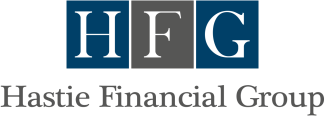
April 2023 Market Perspective
Even with fears of a regional banking crisis and the Federal Reserve continuing to raise interest rates, March proved to be a strong month for both the equity and bond markets, finishing in positive territory for the month and the quarter. For March, the US markets measured by the S&P 500 was up 3.67% and the Dow Jones Industrial Average rose 2.08%. The tech-heavy Nasdaq did substantially better, climbing 6.78% for the month of March. Foreign equity markets also climbed as measured by the MSCI EAFE returning 2.48% and Emerging Markets up 3.03% for the month. For the first quarter of 2023, the Dow Jones Industrial Average, S&P 500 and Nasdaq were up 0.93%, 7.50% and 17.05% respectively.
Fixed Income markets were also strong, closing out the month of March up 2.54% and 2.96% for the quarter, as measured by the Bloomberg Capital Aggregate. The yield on the 10-year treasury closed at 3.48% as of March 31stafter hitting 4% earlier in the month.
As investors were expecting, in an effort to continue the fight against inflation, the Federal Reserve raised interest rates by 0.25% at their March meeting. The Federal funds rate now stands in the range of 4.75% - 5% with this most recent rate hike. In their comments, Fed officials are keeping their peak interest rates for this year in the range of 5% - 5.25% as inflation remains elevated. They also said job gains have picked up in recent months and forecast the unemployment rate to end the year at 4.5%. It is widely viewed that the Federal Reserve will likely raise interest rates again at their next meeting on May 2 and 3, by another 0.25%. Some analysts are forecasting they will pause after that rate hike.
The regional banking system caused heightened volatility in the investment markets with the collapse of three banks, including Silicon Valley Bank. Despite the government stepping in quickly and the FDIC insuring beyond the traditional limits, markets sold off sharply in response to fears of another banking crisis. However, the circumstances surrounding this situation are very different than the 2008 banking crisis. Nevertheless, markets rapidly declined only to rebound in the coming weeks.
We’ve seen these types of emotional reaction from investors, when news hits there is a significant sell-off only to recover within the coming days or weeks. Behavioral finance has taught us that investors’ fear of loss, outweighs their desire for gain, causing investors to sell when negative news is announced. It may make investors feel better to jump on the selling bandwagon, however studies have shown it is not in their best interests to meeting their long term investment goals. It may behoove investors to consider Warren Buffett’s advice to be greedy when others are fearful and fearful when others are greedy.
Coming off a significant decline in 2022, growth stocks saw a burst of performance in January. However, throughout the first quarter there was a “push – pull” effect between growth stocks and value stocks. One week growth were in favor, only to follow with value stocks in favor the following week. Because of this scenario, in our more stock heavy portfolios we are beginning to add back growth stock exposure to take advantage of those times we see them climb. However, with interest rate hikes still occurring throughout the first quarter we were cautious with this addition. As we continue to see progress on inflation and if there is continued evidence the Federal Reserve can achieve a “soft landing” we will begin to come to a more normal allocation in this space.
For our conservative portfolios, we are beginning to see hints of a recovery in the bond market and have utilized a technique we refer to as bar belling. If you will remember from previous Monthly Perspectives, we utilized bonds that had less interest rate sensitivity by shortening what is referred to as duration (a bonds sensitivity to interest rates). History has shown that a bond rally tends to happen, more often than not, the six months prior and the six months after the Federal Reserve stops raising interest rates. Therefore, we have begun to unwind some of our shorter duration bonds to add back in intermediate term bonds. This will allow us to participate in the recovery of a more traditional bond market, while still remaining conservative with the short duration bonds.
Please know we are monitoring the economic data closely as it becomes available and shifting the portfolios to take advantage of the eventual recovery. Should you have any questions or would like to discuss our outlook, please contact our office and we can review your portfolio in more detail.

